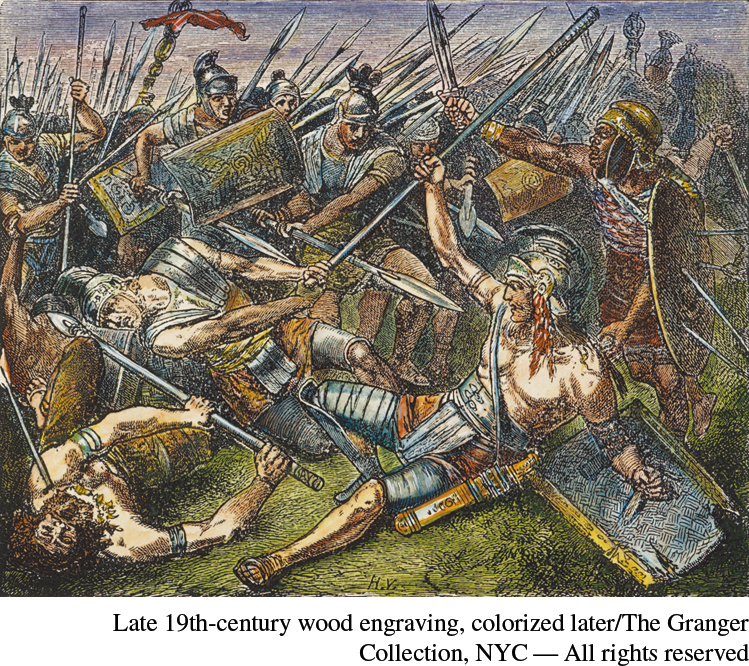ZOOMING IN: The Spartacus Slave Revolt

Despite the prominence of slavery in ancient civilizations, large-
Roman authorities became increasingly concerned when Spartacus and his followers began to manufacture their own weapons and to organize into a more coherent military force, which defeated in turn several hurriedly assembled Roman armies and plundered the rich farming region of Campania. The fortunes of the rebels peaked in 72 B.C.E. when they briefly threatened Rome itself. Both sides treated their opponents brutally. The Greek historian Appian reported that Spartacus ordered the sacrifice of 300 Roman prisoners in honor of the slain rebel leader Crixus, while another historian claimed that Spartacus staged gladiatorial games using 400 captives. When the revolt was finally suppressed, captured rebel slaves received similarly brutal treatment from the Roman authorities.
Fearful for the safety of the capital, the Roman authorities acted decisively. They appointed Marcus Licinius Crassus, a rich and ambitious Roman aristocrat and military commander, to lead eight Roman legions, totaling perhaps 40,000 troops, against Spartacus and his rebels. Crassus cornered the slave army in the far south of Italy, and Spartacus soon realized that his followers faced a fight to the death.
- According to the historian Appian, he advertised their precarious situation to his troops by crucifying a Roman soldier “as a visual reminder to his own men of what would happen to them if they did not win.”15 Rather than be captured, Spartacus and the slaves with him chose to make a last stand.
The Greek historian Plutarch reports that Spartacus killed his horse in front of his troops to show that he had no intention of fleeing, and led his forces in a final desperate engagement with Crassus’s army. Even the most hostile of later historians recounted that Spartacus died bravely during the battle, even if some claimed that his body was never found. For those that survived, a terrible vengeance followed as some 6,000 captured rebel slaves were nailed to crosses along the Appian Way, between Capua, where the rebellion began, and Rome. These crucified prisoners, spaced some thirty-
Spartacus’s revolt had little lasting effect on the society in which he lived. No further large-
Questions: What can Spartacus’s revolt tell us about the nature of the slave system in the Roman Empire? How might you account for the renewed interest in Spartacus over the past two and a half centuries?